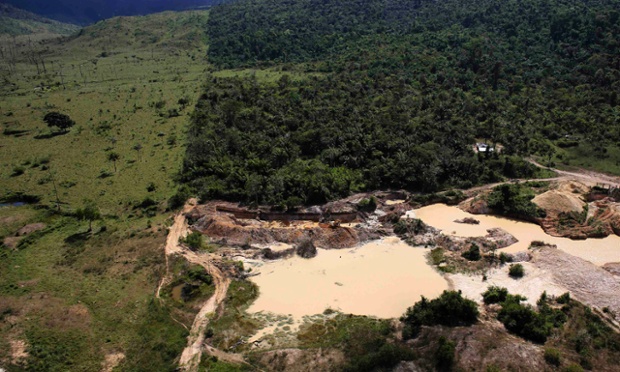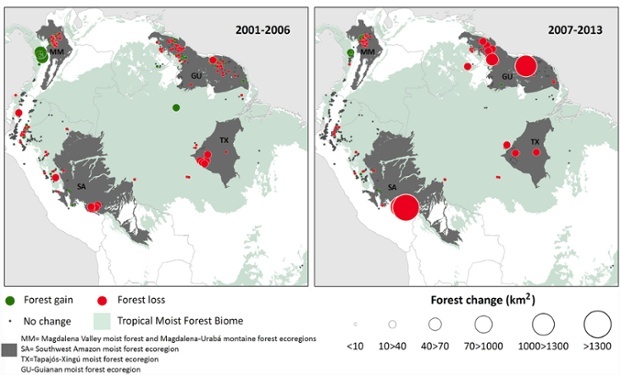
High gold prices causing increased deforestation in South America, study finds
Jonathan Watts
Rising gold prices have made it profitable to extract lowgrade deposits lying beneath protected Amazon and other South American forests, says study of mining impacts

An illegal gold mine on an area of deforested Amazon rainforest the city of Castelo dos Sonhos, Pará State, Brazil. Photograph: Nacho Doce/Reuters
With the rewards now higher than the risks, small scale garimpeiros – artisanal miners – are flocking into protected areas to extract the precious metal from low-grade seams under the tropical forest that were previously unprofitable, says the paper published on Wednesday in the journal Environmental Research Letters.
Analysing satellite data, researchers from the University of Puerto Rico found that an area of 1,680 sq km was cleared between 2001 and 2013, during which time the price of gold rose more than fivefold.
The rate of destruction doubled in the second half of that period, which corresponded with a spike in gold prices as a result of financial instability – which prompts investors to use gold as a safe haven – and rising demand for jewellery in the fast emerging economies of China and India.
While the scale of deforestation is far lower than that caused by agriculture, livestock and illegal logging, the authors say gold mining has worse side-effects because miners use cyanide, mercury and arsenic, which contaminates water sources over a wider area and slows the regrowth of vegetation.
The paper noted that 90% of the deforestation occurred in four main areas: the Southwest Amazon in Peru; the Tapajós-Xingú in Brazil, the Guianan moist forest ecoregion and the Magdalena Valley-Urabá region.
Much of the destruction occurred in environmental protection areas, most notably near Itaituba in the Tapajós basin, which the authors describe as the most important gold producing region of Brazil. About 200,000 people are believed to be employed by small-scale mining in the Brazilian Amazon, following a 10-fold rise between 1990 and 2010.
Another protected area that has experienced a rapid expansion by the mining industry is the Bahuaja Sone ne national park in Peru.
Gold production in South America has risen far faster than global output, which has increased from 2,445 metric tonnes in 2000 to 2,770 metric tonnes in 2013.
The price of gold is down from its recent peak in 2011, but still about double the average of the last 30 years, prompting the researchers to predict greater environmental threats in the future.
